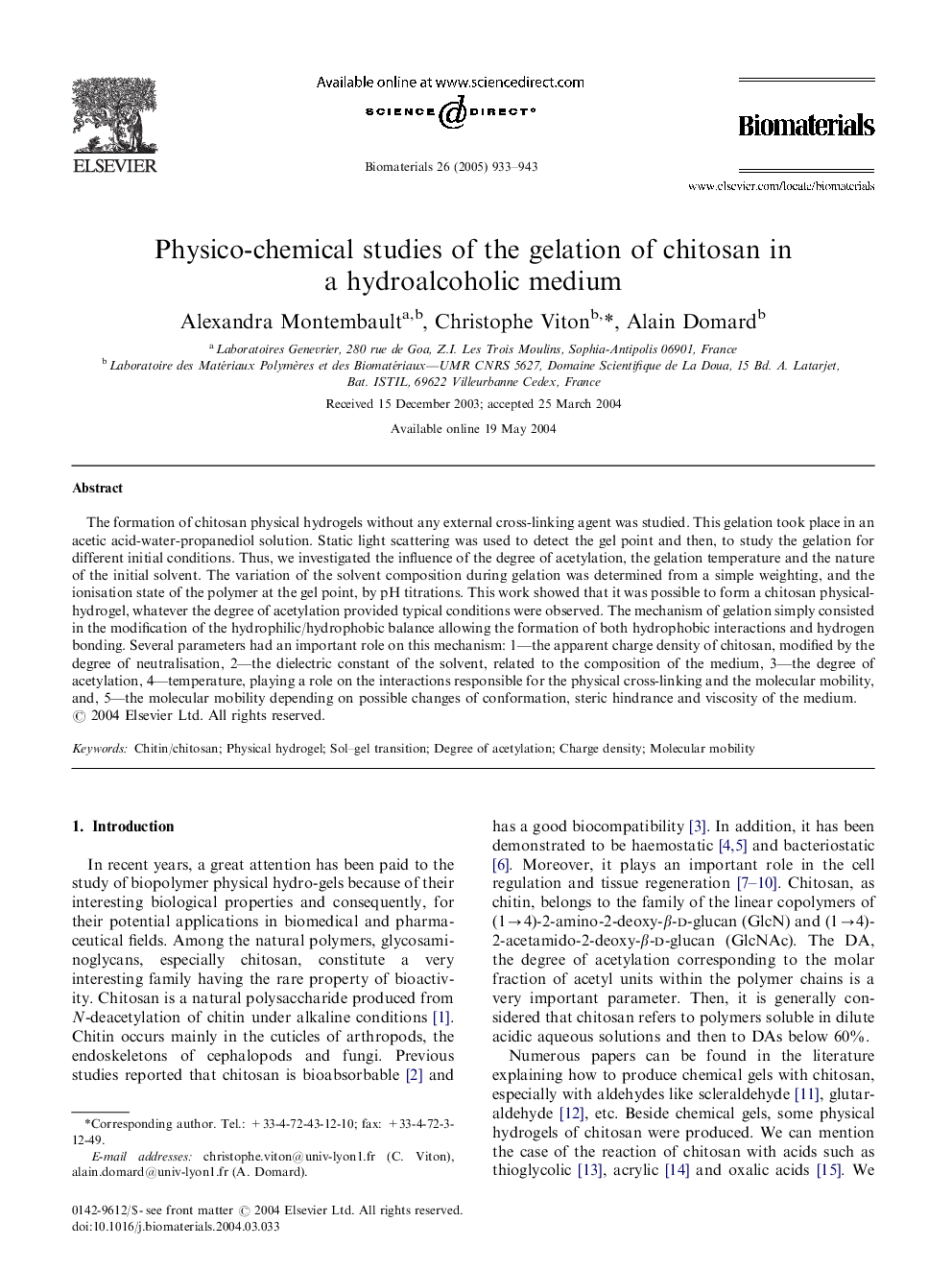| Article ID | Journal | Published Year | Pages | File Type |
|---|---|---|---|---|
| 10230266 | Biomaterials | 2005 | 11 Pages |
Abstract
The formation of chitosan physical hydrogels without any external cross-linking agent was studied. This gelation took place in an acetic acid-water-propanediol solution. Static light scattering was used to detect the gel point and then, to study the gelation for different initial conditions. Thus, we investigated the influence of the degree of acetylation, the gelation temperature and the nature of the initial solvent. The variation of the solvent composition during gelation was determined from a simple weighting, and the ionisation state of the polymer at the gel point, by pH titrations. This work showed that it was possible to form a chitosan physical-hydrogel, whatever the degree of acetylation provided typical conditions were observed. The mechanism of gelation simply consisted in the modification of the hydrophilic/hydrophobic balance allowing the formation of both hydrophobic interactions and hydrogen bonding. Several parameters had an important role on this mechanism: 1-the apparent charge density of chitosan, modified by the degree of neutralisation, 2-the dielectric constant of the solvent, related to the composition of the medium, 3-the degree of acetylation, 4-temperature, playing a role on the interactions responsible for the physical cross-linking and the molecular mobility, and, 5-the molecular mobility depending on possible changes of conformation, steric hindrance and viscosity of the medium.
Keywords
Related Topics
Physical Sciences and Engineering
Chemical Engineering
Bioengineering
Authors
Alexandra Montembault, Christophe Viton, Alain Domard,
